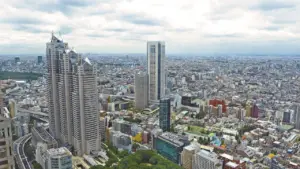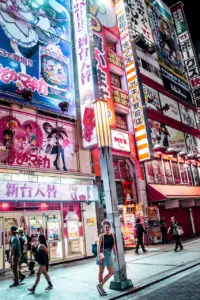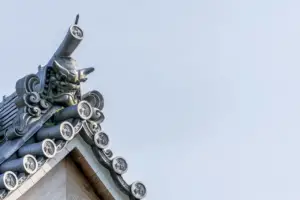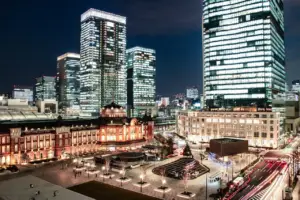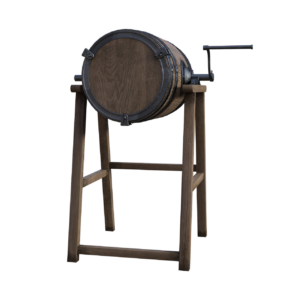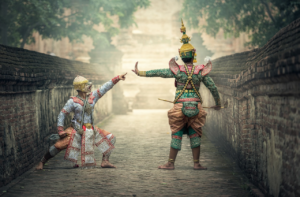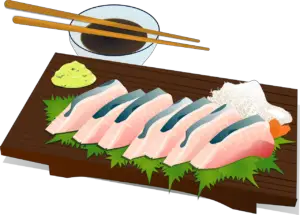If you’re planning a trip to Japan, it’s important to understand the country’s geographical culture and the unique traditions found in each region.
From the snowy landscapes of Hokkaido to the tropical paradise of Okinawa, Japan’s diverse geography has shaped its culture and traditions over thousands of years.
In this guide, you’ll explore the eight regions of Japan and learn about their distinct customs, cuisine, and festivals.
Whether you’re interested in experiencing the bustling metropolis of Tokyo or the tranquil beauty of Kyoto, each region has something unique to offer.
So grab your passport and get ready to discover the fascinating world of Japan’s geographical culture.
Key Takeaways
- Japan’s geographical culture varies by region, with each region offering unique traditions and cuisine.
- Hokkaido is known for its wilderness, natural landscapes, and food culture, while the Tohoku Region boasts breathtaking natural beauty and rich cultural heritage.
- Kansai Region offers cultural and culinary delights, with historic Kyoto and Nara and Osaka, known as the food capital of Japan.
- Hiroshima’s Peace Park serves as a reminder of the devastation caused by the atomic bomb, emphasizing the importance of peace and nuclear disarmament.
Hokkaido Region
Hokkaido, with its rich history and unique cultural traditions, is a fascinating region to explore. Located in the northernmost part of Japan, it is known for its vast wilderness, stunning natural landscapes, and diverse wildlife.
The region is also famous for its food culture, which features fresh seafood, dairy products, and vegetables unique to the area. One of the most popular attractions in Hokkaido is the Sapporo Snow Festival, which takes place every February. The festival features intricate ice sculptures, snow slides, and food stalls selling local delicacies.
Another must-see destination is the Shiretoko Peninsula, a UNESCO World Heritage Site known for its untouched natural beauty, including waterfalls, hot springs, and hiking trails. Whether you’re interested in exploring Hokkaido’s cultural heritage or its stunning natural landscapes, this region has something for everyone.
Tohoku Region
You’ll be captivated by the rugged beauty and rich history of the Tohoku Region. This area is located in the northern part of Honshu, Japan’s main island, and is made up of six prefectures: Aomori, Akita, Iwate, Yamagata, Miyagi, and Fukushima.
Here are three reasons why you’ll fall in love with this region:
-
The natural beauty of Tohoku is breathtaking. From the rugged coastline to the snow-capped mountains, there is no shortage of stunning landscapes to explore. One of the most famous sights in Tohoku is the cherry blossoms that bloom in the spring, attracting visitors from all over the world. The region is also home to several national parks, including Towada-Hachimantai National Park, which boasts a stunning crater lake and hot springs.
-
Tohoku has a rich cultural heritage that is deeply ingrained in its traditions and festivals. Some of the most famous festivals in Japan take place in this region, including the Nebuta Matsuri in Aomori, where giant illuminated floats are paraded through the streets. The region is also famous for its traditional crafts, such as kokeshi dolls and lacquerware.
-
The food in Tohoku is a culinary delight. The region is known for its fresh seafood, particularly salmon and sea urchin, as well as its delicious rice and sake. One of the most famous dishes in Tohoku is the Wanko Soba, a type of soba noodle that is served in small bowls and eaten in large quantities, making it a fun and unique dining experience.
Overall, Tohoku is a region that offers a unique blend of natural beauty, cultural heritage, and culinary delights that’s sure to captivate and inspire you.
Kanto Region
The Kanto Region, located in eastern Honshu, offers a diverse range of experiences that are sure to leave a lasting impression.
If you’re looking for a taste of Japan’s bustling city life, Tokyo, the capital city, is the place to be. Here, you’ll find a vibrant mix of modern and traditional experiences, from the towering skyscrapers of Shinjuku to the serene gardens of the Imperial Palace. Don’t forget to indulge in some of Tokyo’s famous street food, such as takoyaki or okonomiyaki, to complete your urban adventure.
If you’re more inclined towards nature, the Kanto Region has plenty to offer as well. The iconic Mount Fuji, located on the border of Yamanashi and Shizuoka Prefectures, is a must-see destination for any nature lover.
Alternatively, you can visit Nikko, a picturesque town in Tochigi Prefecture known for its magnificent temples and shrines nestled in the mountains.
Whether you’re seeking a city or nature experience, the Kanto Region has something for everyone.
Chubu Region
If you’re planning a trip to Japan, exploring the Chubu Region is a must-do activity. This region is located in the center of Honshu Island and is home to some of Japan’s most iconic landmarks, such as Mount Fuji and the historic city of Takayama.
The Chubu Region is also known for its delicious cuisine, including the famous Hida beef and unique dishes like grilled ayu fish. One of the most popular destinations in the Chubu Region is the city of Nagoya, which is famous for its castle and the Toyota Museum.
Another must-visit spot is the town of Shirakawa-go, which is a UNESCO World Heritage site. Here, you can see traditional gassho-zukuri houses, which are unique to this area and have steep thatched roofs that resemble hands clasped in prayer.
Overall, the Chubu Region offers a perfect blend of natural beauty, culture, and history that will leave you with unforgettable memories.
Kansai Region
So you’re interested in learning more about the Kansai Region? Well, let me tell you, this area is a treasure trove of cultural delights.
From the historic cities of Kyoto and Nara, where you can immerse yourself in the rich traditions of Japan’s past, to the bustling metropolis of Osaka, where you can indulge in some of the country’s most delicious cuisine.
But the fun doesn’t stop there! Kansai is also home to traditional theater and festivals that are sure to leave a lasting impression on anyone lucky enough to experience them.
Historic Kyoto and Nara
You’ll feel like you’ve traveled back in time when you explore the ancient cities of Kyoto and Nara, with their stunning temples, shrines, and traditional architecture.
Kyoto, once the capital of Japan, is home to over 1,600 Buddhist temples and 400 Shinto shrines. One of the most famous ones is the Fushimi Inari Taisha, a shrine dedicated to Inari, the Shinto god of rice and prosperity. The shrine features thousands of torii gates that create an otherworldly atmosphere as you make your way through them.
Another must-visit site in Kyoto is the Kinkaku-ji, also known as the Golden Pavilion. This Zen temple is covered in gold leaf and sits atop a serene pond, making for a truly breathtaking sight.
Nara, on the other hand, was the first permanent capital of Japan and is famous for its deer park, where you can feed and interact with friendly deer that roam freely. The city is home to several UNESCO World Heritage sites, including the Todai-ji temple, which houses the world’s largest bronze Buddha statue.
Another notable site is the Kasuga-taisha, a Shinto shrine with over 3,000 lanterns that light up the path leading to it. Take a stroll through Nara Park and visit the temples and shrines that dot the area, each with its own unique charm and history.
Kyoto and Nara offer a glimpse into Japan’s rich cultural heritage and are a must-visit for anyone interested in history, architecture, and spirituality.
Osaka’s Culinary Delights
Get ready to indulge in Osaka’s mouth-watering cuisine! The city boasts a rich culinary history and is home to a plethora of restaurants, food stalls, and markets that offer a diverse range of dishes that are both delicious and affordable.
Osaka is known as the food capital of Japan, and for good reason. Takoyaki, a popular street food, is a must-try when in Osaka. These bite-sized balls of batter are filled with diced octopus and cooked on a griddle until crispy on the outside and soft on the inside.
Okonomiyaki, a savory pancake, is another local specialty that is sure to satisfy your cravings. Made with a batter of flour, eggs, and shredded cabbage, it is topped with a variety of ingredients such as pork, shrimp, and green onions.
And last but not least, kushikatsu, deep-fried skewers of meat, vegetables, and seafood, is a beloved Osaka dish that is best enjoyed with a cold beer. With so many delicious options to choose from, you’re sure to have a memorable culinary experience in Osaka.
Traditional Theater and Festivals
Immerse yourself in the vibrant cultural scene of Osaka by experiencing traditional theater and festivals. You can witness captivating performances and colorful parades that showcase the city’s rich history and traditions. Here are some of the most popular events you can attend in Osaka:
-
Bunraku: This traditional puppet theater is a UNESCO-recognized art form that originated in Osaka in the 17th century. You can watch skilled puppeteers manipulate life-sized puppets to tell stories of love, tragedy, and adventure.
-
Tenjin Matsuri: This festival, held in July, is one of Japan’s top three festivals and attracts over a million visitors. You can watch a spectacular procession of boats on the Okawa River, with fireworks lighting up the sky in the evening.
-
Abeno Harukas Koen Fireworks: Every year in August, you can witness a stunning fireworks display from the top of the Abeno Harukas skyscraper, the tallest building in Japan. The view from the 58th floor observation deck is unparalleled.
-
Yodogawa Fireworks Festival: This is another popular fireworks festival held in August, with over 6,000 fireworks launched from the banks of the Yodogawa River.
These events provide a glimpse into the cultural traditions of Osaka and are a must-see for anyone interested in Japanese culture. Don’t miss out on the opportunity to witness these captivating performances and celebrations firsthand.
Chugoku Region
As you continue your journey through Japan’s geographical culture, let’s explore the Chugoku Region.
Start with a visit to Hiroshima’s Peace Park and learn about the city’s tragic history and message of peace.
Then, head to Okayama to marvel at the stunning Korakuen Garden, one of Japan’s top three gardens.
Don’t forget to indulge in the region’s delicious seafood and local cuisine, which is sure to satisfy your taste buds.
Hiroshima’s Peace Park and History
Visiting Hiroshima’s Peace Park is a must for anyone interested in learning about the city’s tragic history. The park serves as a reminder of the devastation that the atomic bomb caused on August 6, 1945.
The park features a museum that displays artifacts, photographs, and first-hand accounts of the bombing. The museum also has a section dedicated to peace education, where visitors can learn about the importance of peace and how to prevent nuclear weapons from being used again.
The park also has several memorials, including the Cenotaph for the A-bomb Victims, which contains the names of all the people who died as a result of the bombing. The park’s centerpiece is the Atomic Bomb Dome, which was the only structure left standing near the hypocenter of the blast.
The dome serves as a symbol of peace and a reminder of the need for nuclear disarmament. Visiting Hiroshima’s Peace Park is a powerful experience that can teach us all about the horrors of war and the importance of working towards a peaceful future.
Okayama’s Korakuen Garden
The beauty of Okayama’s Korakuen Garden is breathtaking, with its serene ponds, vibrant flowers, and towering trees. As you walk through the garden, you’ll be transported to a world of tranquility and peace.
The garden was built in 1687 by the daimyo (feudal lord) Tsunamasa Ikeda, and it has since become one of Japan’s most famous gardens.
Here are five things you must see during your visit:
-
The Engetsu-kyo Bridge: This moon bridge is one of the most iconic features of the garden. It is named after its crescent shape and offers stunning views of the surrounding area.
-
The plum grove: The plum grove is a must-visit during the winter months when the trees are in full bloom. The fragrant aroma of the blossoms fills the air, creating a magical atmosphere.
-
The tea house: The tea house is a traditional Japanese structure where visitors can enjoy a cup of matcha tea and some Japanese sweets. The view of the garden from the tea house is simply breathtaking.
-
The rice paddies: Yes, there are actual rice paddies in the garden! They are a reminder of the garden’s origins as a farm and add to the overall charm of the place.
-
The seasonal flowers: The garden is home to a variety of flowers that bloom throughout the year. From cherry blossoms in the spring to chrysanthemums in the fall, there’s always something beautiful to see.
Okayama’s Korakuen Garden is a must-visit destination for anyone traveling to Japan. Its stunning beauty and historical significance make it one of the most unique and special gardens in the world.
Seafood and Local Cuisine
You’ll love sampling the fresh seafood and local cuisine in Okayama. The region is blessed with an abundance of seafood, thanks to its proximity to the Seto Inland Sea.
You can’t miss the kansai-style sushi, where the rice is seasoned with vinegar and sugar, topped with fresh seafood, and served with wasabi and soy sauce. The seafood is so fresh that you can taste the ocean in every bite. Savor the subtle flavors of sea bream, sea urchin, and squid, or try something more adventurous like fugu, the infamous pufferfish dish that can only be prepared by licensed chefs due to its deadly toxins.
Aside from seafood, Okayama’s local cuisine is also worth trying. One popular dish is the kibi-dango, a sweet dumpling made from millet flour, sugar, and soybean flour. It has a soft and chewy texture and is often served with sweet red bean paste or kinako powder.
Another must-try is the local specialty, the Okayama-style takoyaki. Unlike the traditional Osaka-style, Okayama’s takoyaki is made with octopus legs and mixed with green onions and ginger, giving it a unique flavor. With a diverse range of dishes to choose from, Okayama’s cuisine is a feast for the senses that will leave you wanting more.
Shikoku Region
If you’re a foodie, Shikoku region will satisfy your cravings with its unique cuisine. This region is known for its fresh seafood, especially the delicacy of octopus, which is considered a specialty. The dish, takotamago, is made of boiled octopus stuffed with quail egg and seasoned with soy sauce.
Another popular dish is tai-meshi, which is made of rice topped with steamed sea bream and flavored with soy sauce, sake, and dashi broth. Shikoku is also known for its udon noodles, which are thicker and chewier than other types of noodles. The most famous udon dish in Shikoku is sanuki udon, which is served in a hot soup and topped with scallions, tempura crumbs, and grated ginger.
Apart from its food, Shikoku is also famous for its traditional festivals. One of the most popular festivals is the Awa Odori festival, which is held in August in Tokushima city. The festival is a celebration of dance and music and attracts thousands of visitors every year.
Another significant festival is the Otsuka-mura Yakimono Matsuri, which is held in July in the Otsuka village. This festival is dedicated to pottery and features pottery exhibitions, workshops, and demonstrations.
Shikoku region is also known for its scenic beauty, and you can explore its mountains, rivers, and coastline for a memorable experience.
Kyushu and Okinawa Region
Explore the savory cuisine and stunning landscapes of Kyushu and Okinawa, where rich history and vibrant culture come together to create a one-of-a-kind experience.
Kyushu, the third largest island in Japan, is known for its active volcanoes, hot springs, and beautiful beaches. The region is also famous for its food, including the popular tonkotsu ramen, a dish made with pork bone broth and thin noodles. Another must-try dish is mentaiko, a spicy cod roe that’s often served with rice.
In Okinawa, the southernmost prefecture of Japan, visitors can experience a unique blend of Japanese and Okinawan culture. The region is home to the Ryukyu Kingdom, which ruled over Okinawa for over 400 years. This rich history is reflected in the architecture, traditional music, and martial arts of the region.
Okinawa is also known for its beautiful beaches, including the famous Emerald Beach and its crystal-clear waters. With its distinct culture and stunning natural beauty, Kyushu and Okinawa offer a truly unforgettable experience for visitors to Japan.
Frequently Asked Questions
What is the population density of each region?
To answer your question about the population density of each region in Japan, it’s important to note that Japan is a relatively small country with a total population of around 126 million people.
The most densely populated region is the Kanto region, which includes Tokyo and the surrounding metropolitan area, with a population density of around 1,500 people per square kilometer.
The Kansai region, which includes cities like Kyoto and Osaka, has a slightly lower population density of around 1,200 people per square kilometer.
Other regions, such as Tohoku and Hokkaido, have much lower population densities due to their more rural nature.
It’s worth noting that population density can vary greatly within each region depending on the specific cities and areas within it.
Overall, Japan’s population is highly concentrated in urban areas, with over 90% of the population living in cities.
What are the most popular tourist attractions in each region?
If you’re looking for the most popular tourist attractions in each region of Japan, you won’t be disappointed.
Tokyo, the capital city, is a must-visit destination for its neon lights, bustling streets, and cultural landmarks like the Imperial Palace and Meiji Shrine.
In Kyoto, you’ll find an abundance of traditional temples and gardens, including the famous Fushimi Inari Shrine.
Osaka is known for its delicious food and vibrant nightlife, while Hokkaido is a winter wonderland with skiing and snowboarding opportunities.
Hiroshima is a somber but important place to visit, with its Peace Memorial Park and Museum.
And in the southern islands of Okinawa, you’ll find gorgeous beaches and a unique culture influenced by its history as a former kingdom.
Whatever your interests, Japan has something for everyone when it comes to tourism.
What are the unique cultural practices or festivals in each region?
If you’re interested in Japan’s unique cultural practices and festivals, you’ll find a wealth of fascinating traditions to explore in each region.
In Hokkaido, for example, you’ll find the Sapporo Snow Festival, where massive snow sculptures take over the city each February.
In Tohoku, the Nebuta Matsuri in Aomori is a spectacular display of illuminated floats depicting historical and mythical figures.
In Tokyo, the Sanja Matsuri at the Asakusa Shrine is a raucous celebration of the city’s Shinto heritage, with parades, performances, and street food.
And in Kyoto, the Gion Matsuri is a month-long series of events that culminates in a massive parade of elaborate floats.
These are just a few examples of the unique cultural practices and festivals you can experience in Japan’s different regions, each with its own rich history and traditions.
What is the local cuisine like in each region?
When it comes to local cuisine, Japan’s regions offer a diverse range of flavors and dishes.
In the northernmost region of Hokkaido, seafood is a staple, with specialties including crab, sea urchin, and salmon roe.
Moving down to the Tohoku region, their cuisine is heavily influenced by the harsh winters, with hearty dishes like hot pot and grilled meat being popular.
The Kanto region, home to Tokyo, is known for its street food and sushi, while the Chubu region is where you’ll find Japan’s famous noodles, such as soba and udon.
In the Kansai region, the home of Osaka and Kyoto, their cuisine is known for its bold flavors and use of fermented ingredients, such as soy sauce and miso.
Finally, the southernmost region of Kyushu is known for its spicy food, with dishes like tonkotsu ramen and mentaiko being popular choices.
No matter where you go in Japan, you’re sure to find a local cuisine that’s unique and delicious.
What are the transportation options for traveling between regions?
If you’re looking to travel between regions in Japan, you’ll be happy to know that the country has a fantastic transportation system. The most popular and efficient mode of transport is the Shinkansen, or bullet train, which can take you from one end of the country to the other in just a few hours.
The train system in Japan is also incredibly punctual, so you don’t have to worry about delays or cancellations. Alternatively, you can also take a domestic flight between regions, but this can be more expensive.
In some areas, there are also local buses and trains that can take you to nearby towns and cities. Overall, Japan’s transportation system is reliable, efficient, and safe, making it easy to explore the different regions and their unique traditions.
Conclusion
Congratulations! You’ve just completed a comprehensive guide to Japan’s geographical culture.
You’ve learned about the unique traditions of each region, from Hokkaido’s winter festivals to Okinawa’s traditional dance performances.
It’s clear that Japan’s culture is deeply rooted in its geography, and each region has its own distinct personality and traditions.
By exploring these regions, you’ll gain a deeper understanding of Japan’s rich history, cultural diversity, and natural beauty.
So whether you’re planning a trip to Japan or simply interested in learning more about this fascinating country, be sure to keep this guide handy. And remember, there’s always more to discover so keep exploring!

































































